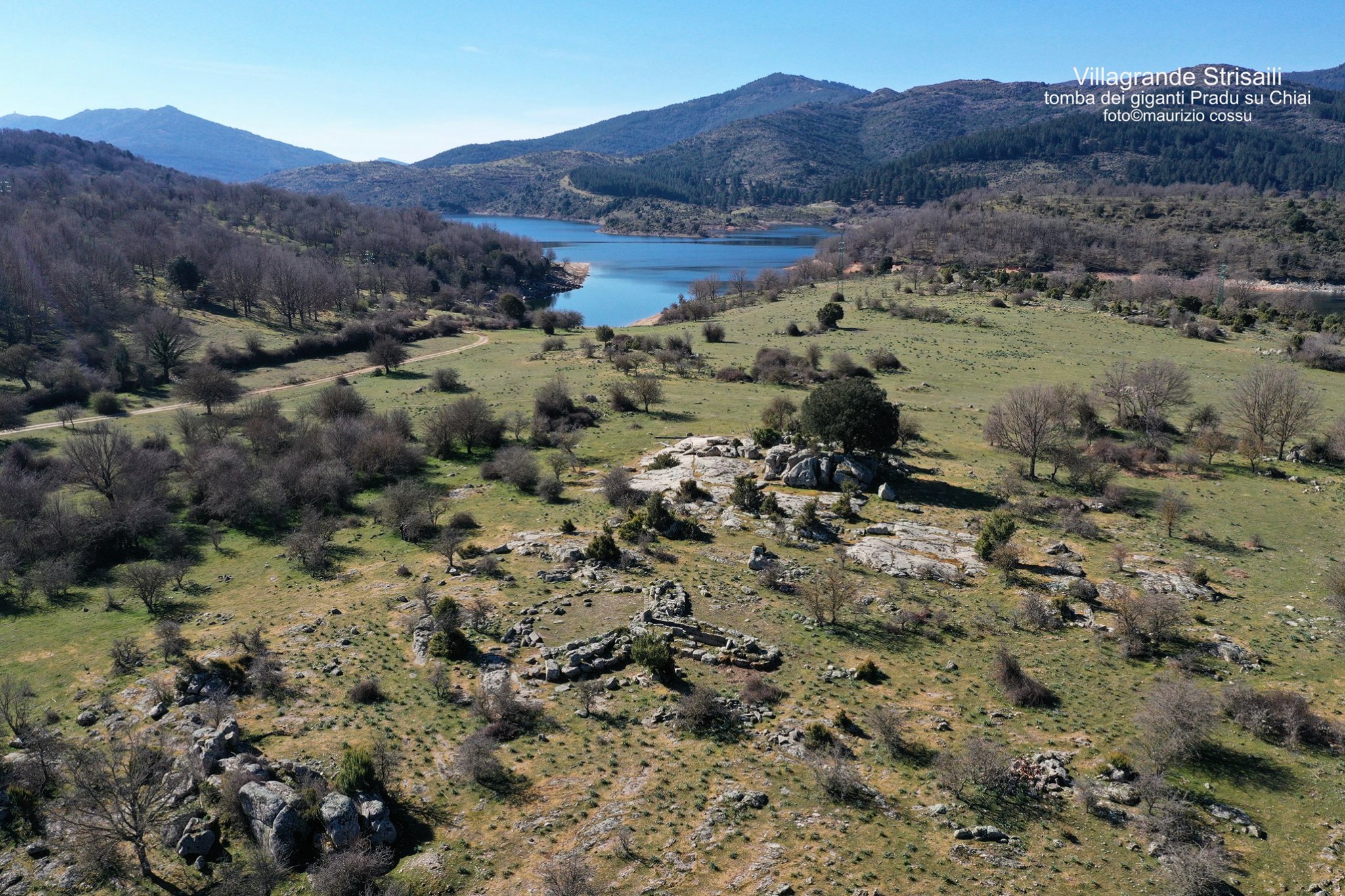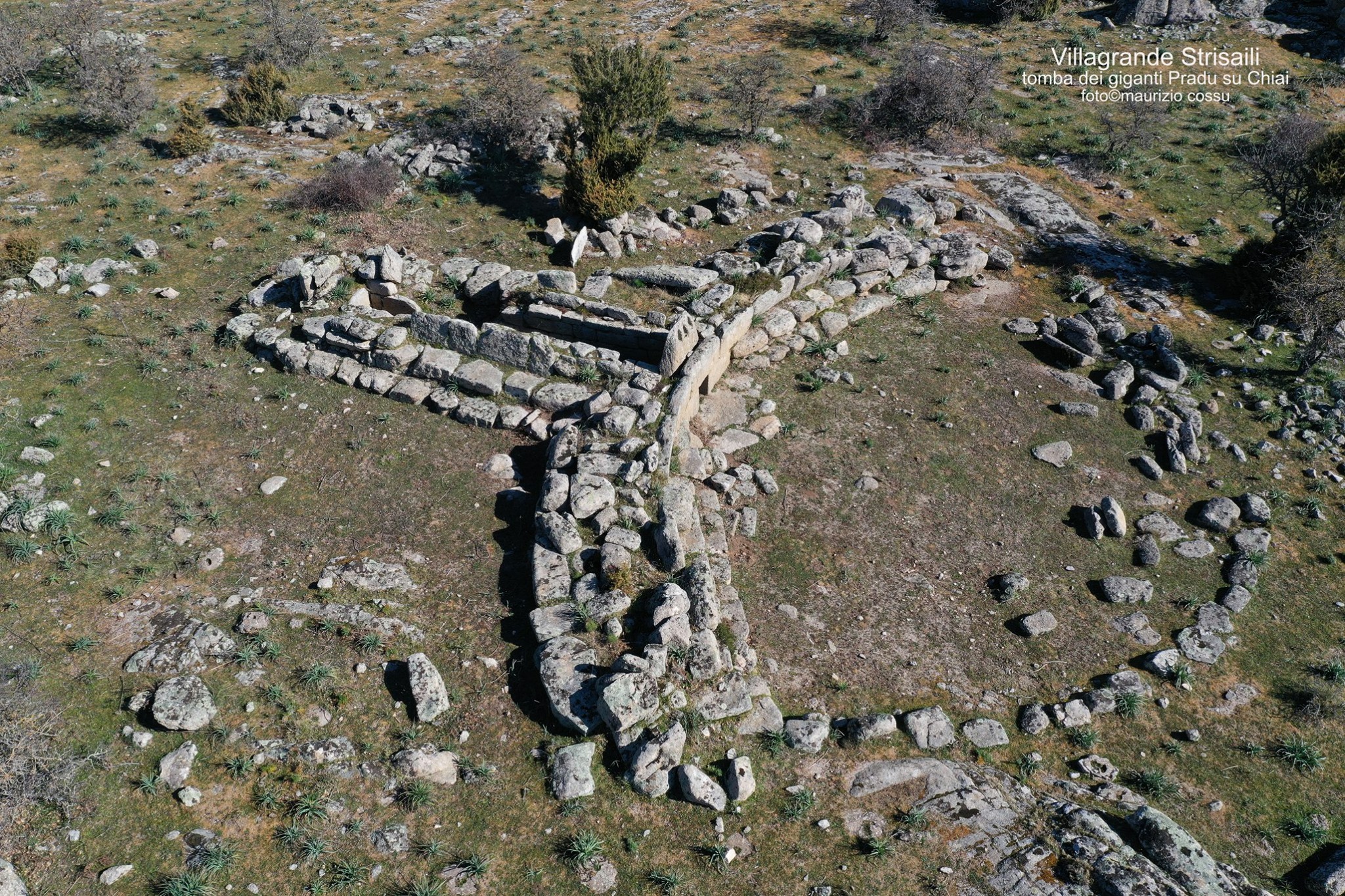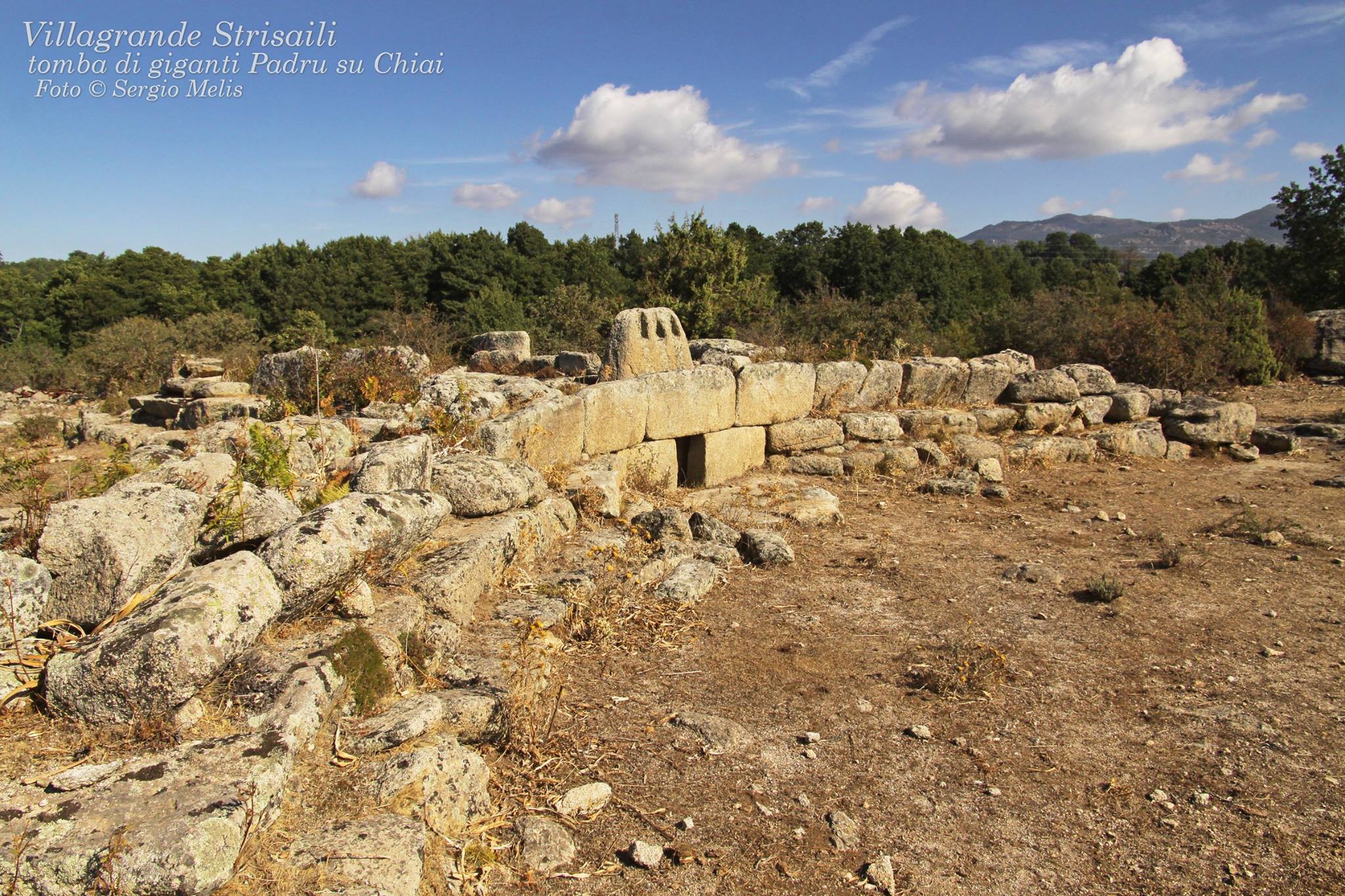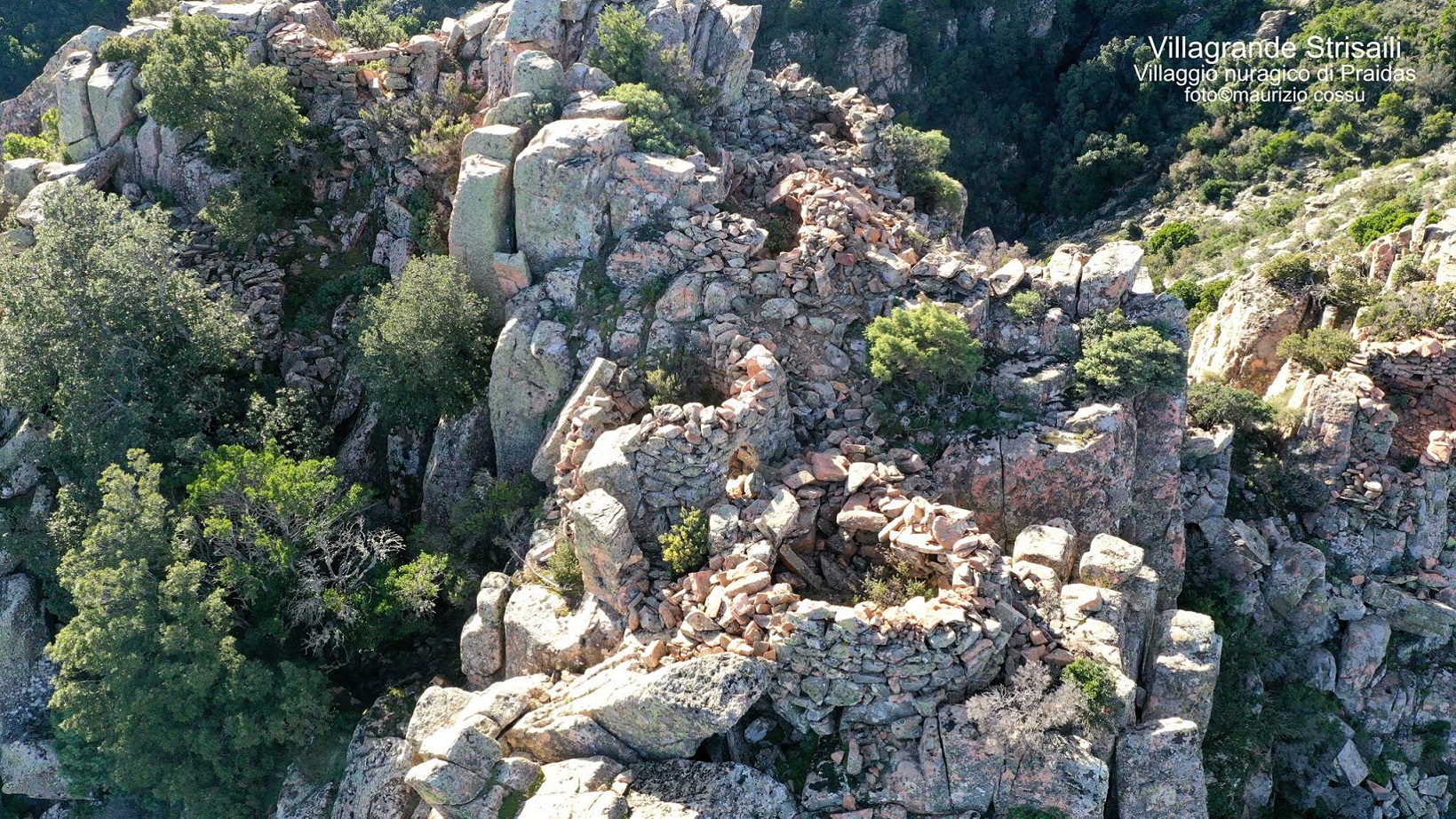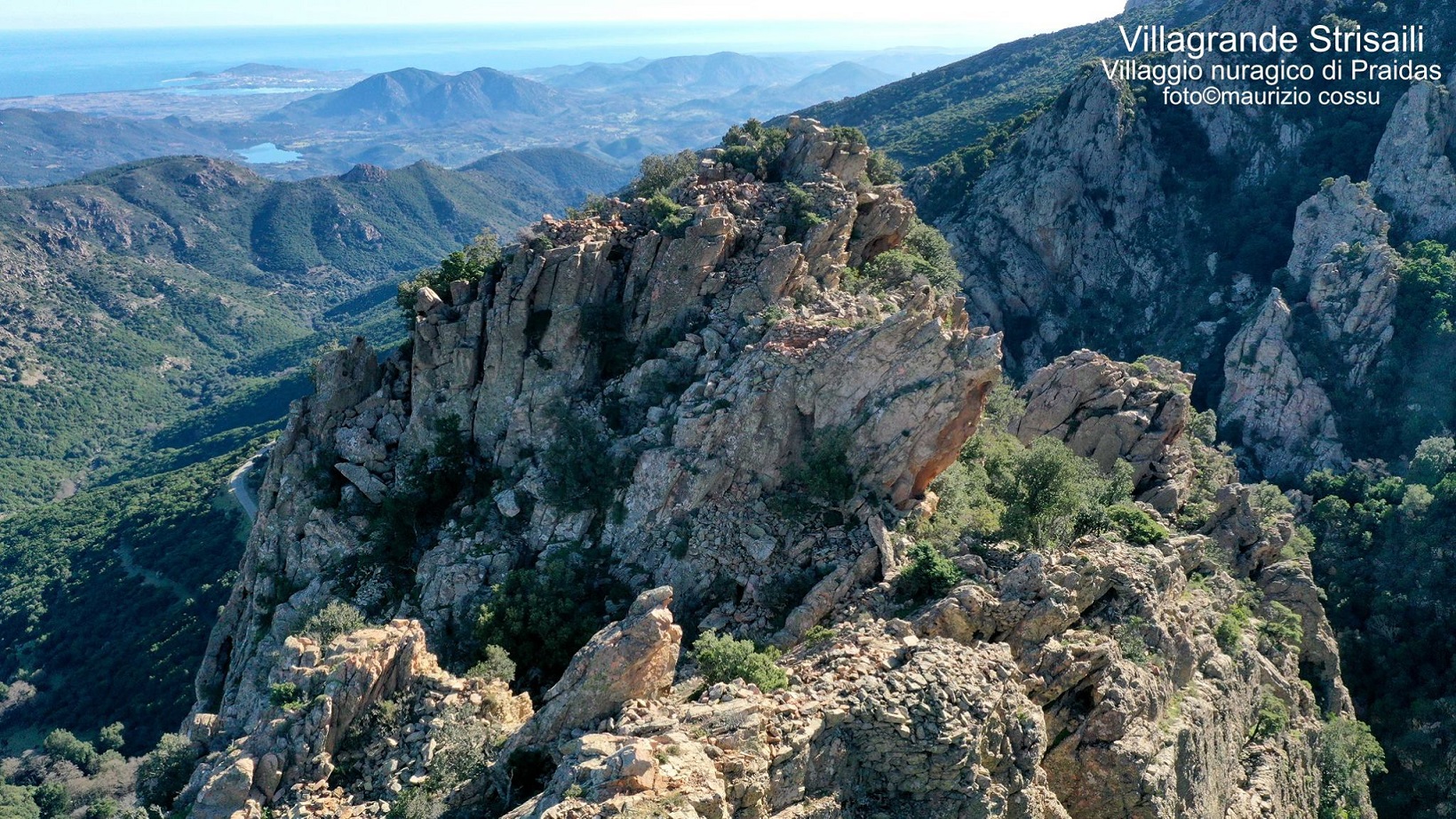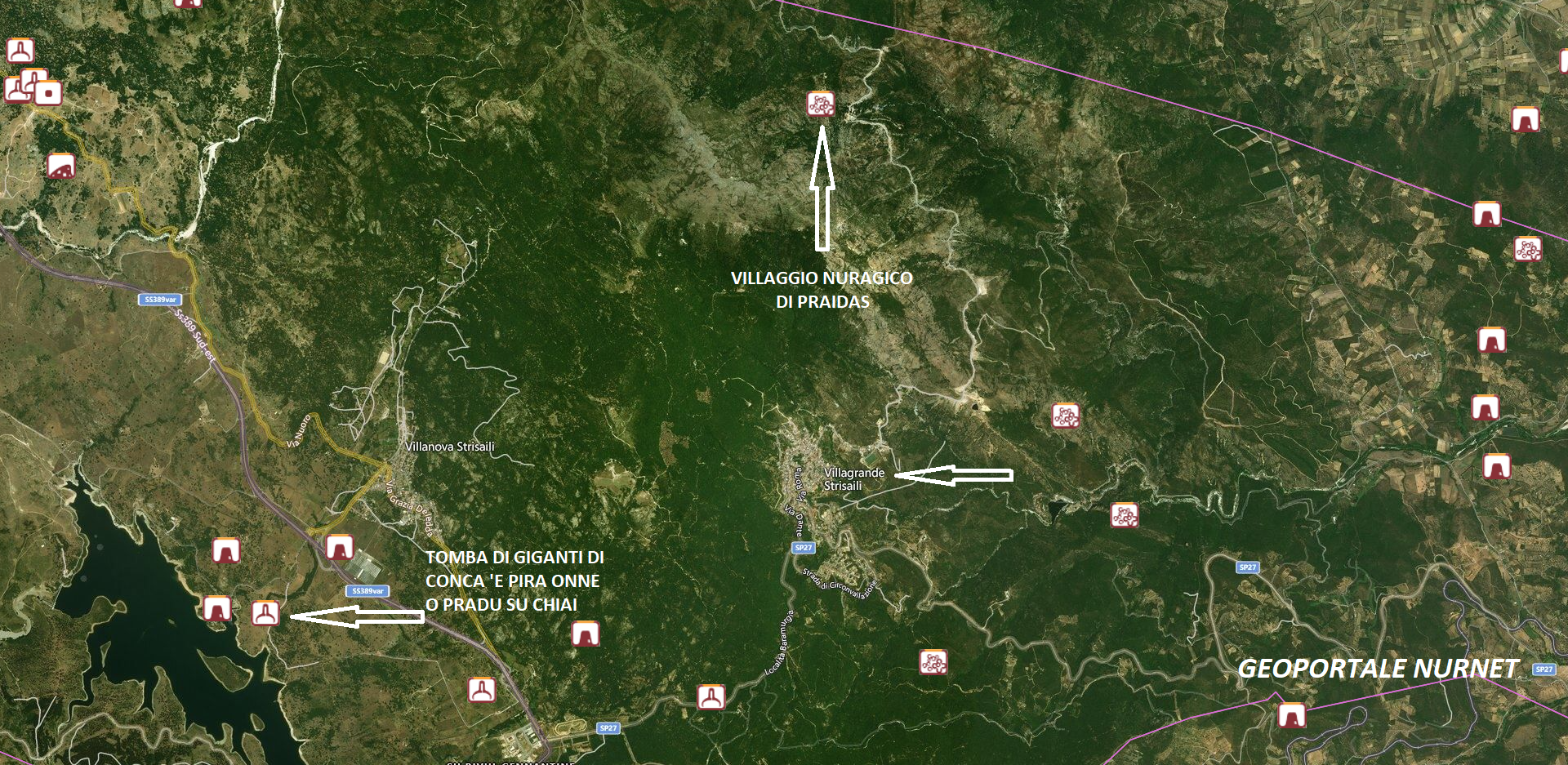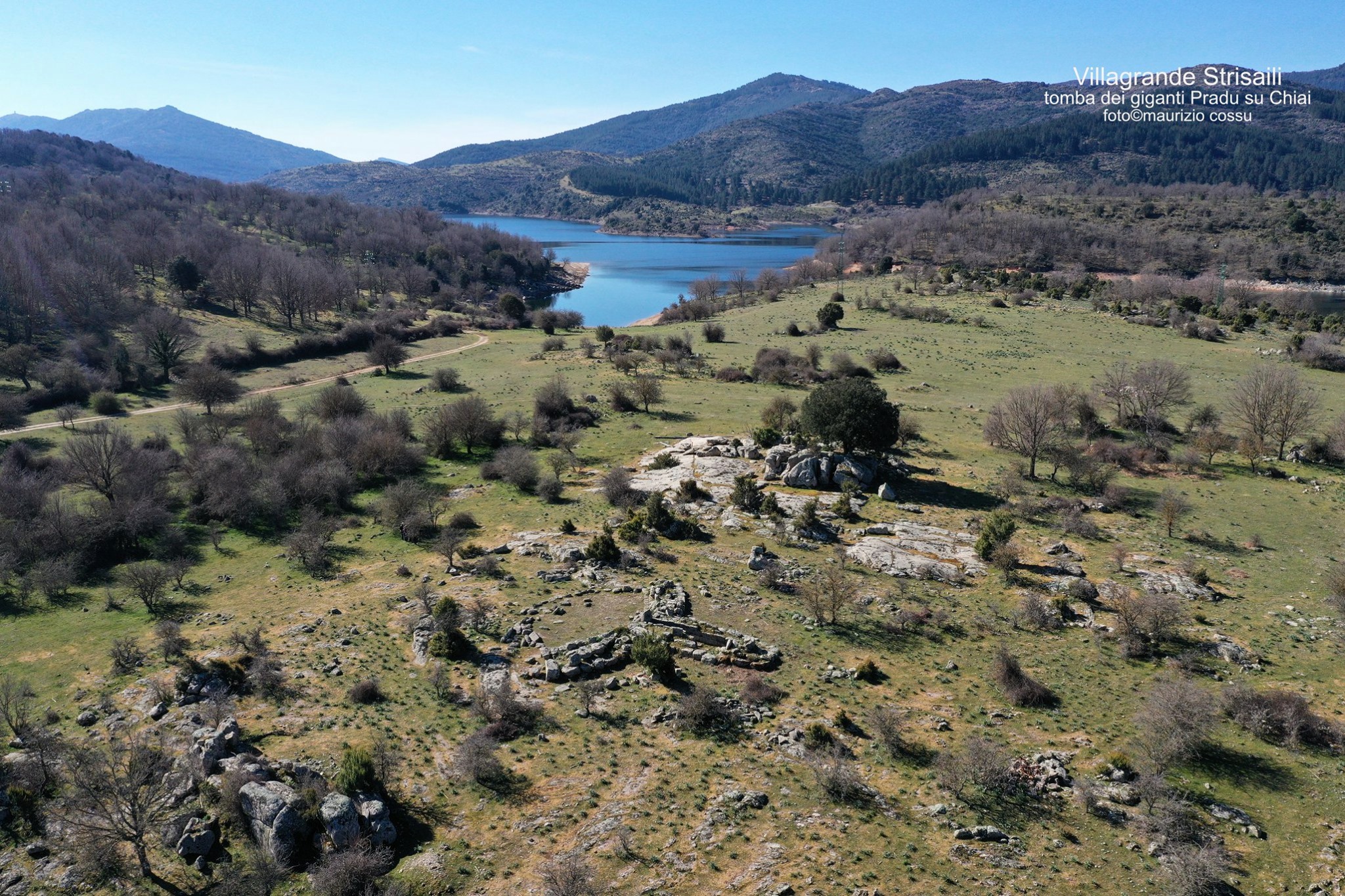15b: The tomb of giants of Pradu su Chiai or Conca ‘e Pira Onne, in Villagrande Strisaili, “also known by the name of Campu de Pira Onni, is a burial of the isodomic type with “toothed frieze”. It is built with granite blocks. The tomb structure is made with well-worked blocks arranged in regular rows in retreat. In correspondence with the apse, there is a stone with a circular section. The internal funeral corridor, rectangular in plan, is constructed with horizontal rows of perfectly worked stones, the larger ones at the base. … Of the corridor’s covering, today only a single slab remains, inverted during the work for the arrangement of a lattice. The entrance of the burial chamber is bordered by two well-worked rectangular stones with beveled corners, upon which rests a lintel that has two vertical notches for better fixing of the closing stone. On the lintel lay a trapezoidal stone “with teeth” with a slightly curved upper surface. The semicircle of the exedra is made with orthostatic slabs resting on a base of worked blocks. The support base protrudes in relation to the alignment of the orthostats, forming a double bench-seat… The tomb can be dated to the Recent Bronze-Final Bronze (1300-900 B.C.)” (Sardegna Cultura).
Through a wild gorge, carved by a stream in porphyritic granite, one accesses the nuragic village of Praidas, also in the territory of Villagrande Strisaili and in a dominant position over the underlying territory.
The photos of the tomb of giants of Pradu su Chiai or Sa Conca ‘e Pira Onne, in Villagrande Strisaili, are by Maurizio Cossu, Sergio Melis, and Francesca Cossu. Those of the nuragic village of Praidas, also in Villagrande Strisaili, are by Giovanni Sotgiu and Maurizio Cossu.